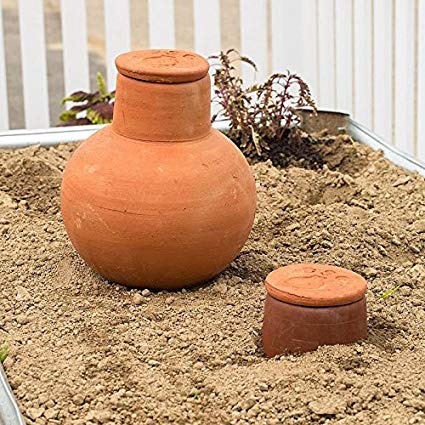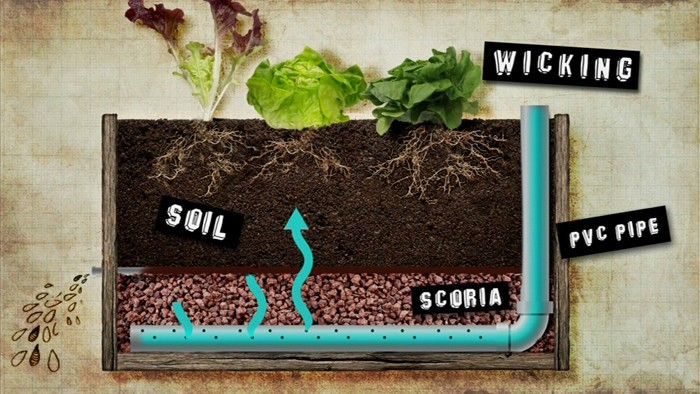

Water is such a precious resource and one that we need to use very wisely. The ability to maintain a garden over an Australian summer can depend on your creative and clever watering techniques. In many places, water restrictions are very familiar and happen most summers. In some towns in New South Wales, it is predicted that water will run out by the end of this year. Perhaps we have splashed that precious resource around too freely in the past and we have certainly developed seriously bad habit’s in terms of water wastage.
Of course, there are things that we all should be doing as a simple matter of course. These are practices that should be second nature such as only watering in the early morning or evening, watering at ground level only, never leaving the tap running while you are cleaning your teeth and washing full loads of laundry only.
Installing rainwater tanks for garden watering is an excellent idea where at all possible. In the early 1990’s when we were building our first house and wanted to install rainwater tanks, we were not able to as it was against the bylaws at that time, can you believe that it was not legal to install a tank? I have also heard of towns where when piped water was connected, they were made to remove their rainwater tanks. Now we have tanks that will usually see us through the summer with wise watering practices.
Improving your soil by adding organic matter increases the water retaining ability of the soil which gives you an instant head start. Watering your seedlings less frequently encourages the plants to develop longer and stronger roots which decreases their dependence on supplementary watering. Mulching around your plants will help prevent your soil from drying out.
Put a bucket under your shower to catch your “warm-up” water and use that to water pot plants or garden beds close to your house. With only one person showering it is easy to gather several litres each day, with each additional person in the household will add several more litres of water available to water your garden. Keep a bucket in your kitchen and collect any left-over water from glasses and drink bottles, the water you use to cook vegetables etc and use for your gardens. Wash vegetables in a bowl rather than pouring water down the sink and use that water in the garden as well.
Dig a hole next to where you are going to plant more water-dependent plants such as tomato, zucchini, cucumber, etc. and bury a 2-litre plastic soft drink bottle up to the neck. Prior to burying the bottle use a pin and put multiple tiny holes around the bottom third of the bottle. Use a hose or a watering can and a funnel to fill the bottle as required. This will ensure that the soil around the roots of the plant remains damp. You can add liquid fertilizer to the bottle when desired to deliver a dose of goodness right where it works best.

Ollas are unglazed terracotta pots designed specifically to be buried in the garden to keep the soil damp by water slowly leaking out. It is very difficult to purchase Ollas in Australia but if you have a potter as a friend, have access to a potter or are a potter, you are set. I tried a makeshift version one year with terracotta flowerpots with the drainage hole sealed with silicone and an old plate on top to reduce evaporation. It didn’t work out overly well and I found the plastic drink bottle worked much better. I have read of people who use traditional Ollas in the correct shape and have much better success with them. I am on the hunt for a potter who can make some for me -my skills with the clay would lead to horrendously wonky pots. Close monitoring of water levels is essential with either Ollas or bottles as complacency may lead to your garden drying out.

Wicking beds were developed in Africa as a response to the need to produce food in dessert conditions. The principle is the same as self-watering flowerpots with the plants accessing the water from a water reservoir via a wicking process.
A raised bed is required and can be built from any medium, I know people who have made wicking bed from old refrigerators, others from pallets and some from beautiful timbers. The outside doesn’t really count it is the inside that matters. The container needs to be sealed in the bottom third, builder’s plastic is good for this task. If using an old fridge, you won’t need to use plastic and if using something like a bathtub you will need to seal the plug hole. Place a piece of pipe with holes drilled into it along the bottom of the container with an upright piece of pipe joined to it and with the opening just above the soil surface. Fill the bottom third of the container with gravel or scoria, being careful to not pierce the plastic. Cover the top of the gravel with a piece of shade cloth or similar fabric to prevent the soil from infiltrating the reservoir area. Drill a hole in the bed just at the level where the gravel or scoria ends, this allows any additional water to escape and ensures that the bed will not flood. Fill the container with good soil of compost. Plant your seeds or seedlings and water in gently. If you are using seeds you will need to water gently from the top until the seeds germinate and reach the level of having their true leaves. Mulch the surface of the bed to reduce evaporation.
Once the plants are established you should only need to water the plants through the hosepipe. Fill the reservoir until water starts to run out the drain. The amount of water you need will depend on the dimensions of the wicking bed and the time between refills will depend on temperature and the type of plants, you will work out the requirements as you go.
I have made wicking beds successfully form polystyrene broccoli boxes with very good success. This method is great for growing leafy vegetables such as spinach and lettuce. Remember that you will always need to replenish the soil and fertilise regularly with this type of garden bed.
If you only manage to implement a couple of changes you are making a difference and saving water. Imagine if we all managed to change our practices, how green would our gardens be?